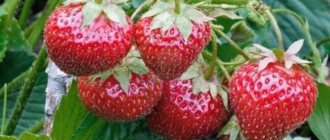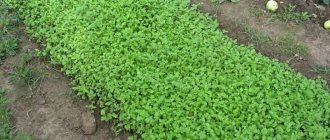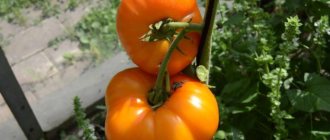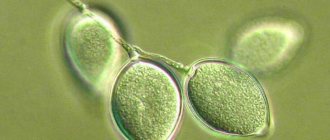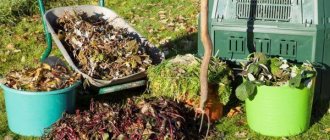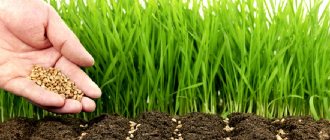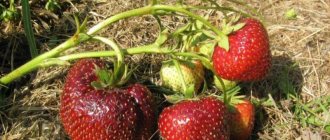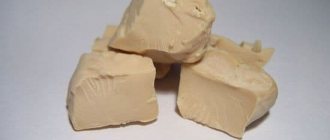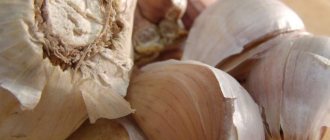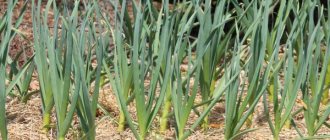Compliance with crop rotation conditions allows you to get an excellent harvest from fruit, vegetable and berry crops. Proper planting for perennial strawberry bushes is of particular importance. If you place the seedlings in a good location, a minimum of chemicals will be required to maintain the health and fertility of the soil.
Taking into account the fact that garden strawberries need renewal every 3-4 years, you should plan in advance where to place new seedlings. It is known that planting a crop in the same place where the mother bushes grew is not recommended.
Influence of different cultures
Some precursor plants help improve the soil structure for strawberries, make them easier to care for and provide reliable protection against pathogenic bacteria. Having decided on a site for transplanting garden strawberries for the future, it is worth sowing it with a suitable crop that will prepare the soil.
Compliance with the crop rotation scheme is one of the important conditions for obtaining a good harvest.
Green manure
A year before planting strawberries, it is recommended to plant green manure in the selected area in the garden. Plants saturate the soil with organic substances and get rid of a number of pathogenic bacteria. If we consider this type of “fertilizer” more carefully, we can reveal the following:
- oats rid the soil of nematodes;
- buckwheat saturates the soil with phosphorus, potassium and nitrogen;
- after mustard, the fertile layer is enriched with humus, bacteria in the soil that cause late blight are inhibited;
- rapeseed increases the concentration of organic matter and phosphorus;
- Lupine exudes nitrogen.
Destroy pathogenic microorganisms that can succumb to strawberries, flowers - calendula and marigolds
Phacelia will cope well with increased soil acidity.
Important! To obtain the maximum effect, after the start of flowering, green manure is mowed, left to dry on the site for several days, then plowed into the ground to a depth of about 15 cm.
Vegetables
Let's look at several categories of vegetables that grow on many gardeners' plots. Some plants have a positive effect on the soil and do not interfere with the further growth of the transplanted rosettes. But there are also crops after which it is strongly not recommended to plant strawberries.
Onion and garlic
Many gardeners can find ridges of onion families on their plots. A natural question arises: is it possible to plant strawberries after onions and garlic?
The pests that can attack beneficial plants differ from each other. True, if you plant strawberries in the fall, after harvesting onions or garlic, the soil will not have time to recover - it will be difficult for the rosettes to take root in the depleted area.
When transplanting strawberries, you need to take into account the timing of harvesting previous plants. For example, in the southern regions, early ripening varieties of onions and garlic are harvested in the summer. If you plant green manure in a garden bed, they will nourish and enrich the soil. Strawberry rosettes will take root well before the onset of cold weather, so you can plant strawberries after garlic and onions in the fall, choosing a warm day for planting.
Onion crops and strawberries do not have common diseases
Legumes and greens
Dill, lettuce and parsley require the least vitamins for good growth. The greens grown on the site do not lead to depletion of the land.
As for legumes, peas and beans also do not take away useful minerals from the garden. On the contrary, these plants enrich the soil with nitrogen and are effective precursors for strawberries.
Good and bad predecessors are presented in the table:
| The best predecessors | Turnips, radishes, radishes, beans, onions, garlic, spinach, parsley, carrots, beets, corn. Bulbous flowers: tulips, hyacinths, daffodils. |
| Can be planted after green manure | Buckwheat, vetch, oats, alfalfa, lupine, clover, grain crops |
| Invalid predecessors | Potatoes, tomatoes, cucumbers |
Radish and radish
Radishes and radishes require the same growing conditions as strawberries. Plants are not picky about the composition of the soil, and they do not have common diseases. However, after representatives of the cabbage family have grown on the site, the soil should be enriched with nitrogen.
After which crops it is undesirable or impossible to plant strawberries: unsuccessful predecessors
However, there are a number of vegetables and shrubs that are very unsuccessful or completely unacceptable predecessors for strawberries. These crops take a lot of useful substances from the soil or have similar diseases that remain in the soil and are subsequently inherited by garden strawberries. Therefore, you should not plant this berry bush after them.
The following crops are extremely unsuccessful predecessors for planting strawberries after them:
- itself (garden strawberry) ;
- nightshades, such as tomatoes, potatoes, which can leave behind such a dangerous disease as late blight;
Advice! If you are still going to plant strawberries after tomatoes or potatoes, then be sure to treat (spill) the soil with a solution of Fitosporin (according to the instructions).
- all varieties of cabbage (except cauliflower) When growing, they require large amounts of nitrogen, potassium and phosphorus, as well as large amounts of moisture, which means they leave behind very depleted soil. Therefore, it is advisable to plant the bed with green manure after the cabbage, and plant strawberries in this place next year, that is, carry out spring planting of garden strawberries;
- pumpkin (pumpkin, zucchini, cucumbers, melons, watermelons) crops also deplete the soil, taking all the nitrogen from it;
- sunflower For its growth, it takes almost all the nitrogen that is in the soil, and also “sucks out” a lot of moisture;
- Jerusalem artichoke (earthen pear), planted on the site, it is difficult to completely remove from the beds; its roots remain in the soil and in the following seasons begin to grow again, drowning out the strawberry bushes;
- all ranunculus flowers (anemones , aquilegia, clematis, delphinium, buttercup, etc.) secrete specific substances that inhibit strawberry seedlings;
- raspberries also not suitable as predecessors for garden strawberries, since they have a common pest - strawberry-raspberry weevil.
If there is no other place for planting this berry crop, and you have to make beds in the place where the above-mentioned vegetable crops used to grow, then before planting strawberries, you should liberally add complex mineral fertilizers and organic matter to the soil, and also do not forget to fertilize and carry out preventive treatments against diseases and pests throughout the season.
Predecessor rating
To summarize, it will become clear after which it is better to plant strawberries. The optimal precursors are:
- beans and peas;
- carrot;
- onion and garlic;
- dill and parsley;
- oats, rye, barley, mustard.
In the fall, it is better to replant rosettes after green manure - spinach, lettuce, celery. Garden flower beds where bulbous plants grew - daffodils, tulips, hyacinths - perfectly preserve beds for future strawberries. Before planting strawberries, you can use the place where you “lived”: clover, lupine, alfalfa, rapeseed, phacelia.
But after what you can’t plant strawberries, it’s:
- after the nightshade family, which includes potatoes, tomatoes and eggplants;
- followed by melons - watermelons, melons, pumpkins and cucumbers;
- immediately after similar crops - the next year after blackberries, raspberries, sea buckthorn.
Those areas where cherry, pear, apricot and peach grew the previous year are also not suitable for transplantation. The list of outsider predecessors for strawberries includes rose hips, roses, and hawthorn. You should not organize strawberry beds after plants such as sunflower, Jerusalem artichoke and zucchini.
Rule 3. Do not plant berry plants and shrubs after strawberries
It is strictly forbidden to alternate strawberries with other berry crops, shrubs and trees. For example, strawberries, raspberries, hawthorn, sea buckthorn, rowan.
Planting strawberries after strawberries is an irrational and inappropriate use of land. There are two reasons for this.
| Reason 1. The new plant will grow and develop poorly Strawberries in one place can bear fruit well for no more than 4 years. The berry actively depletes the soil. Other berry crops also require a lot of nutrition. In depleted soil they will not receive it, so the plants will wither. Young strawberry seedlings can be returned to their original place only after 5 years. By this time, the soil composition will be restored. | |
| Reason 2. Risk of infecting strawberries with diseases and pests All berry-bearing crops have common diseases and pests. For example, if a strawberry bush was infected with a strawberry nematode, the pest will remain in the soil and begin to spoil similar plants. Spores of parasitic fungi, such as late blight, will move along with the diseased bush to a new location. But the mycelium of the fungus will remain in its old place and will develop, infecting suitable new plants |
Wonderful neighbors
To increase a tasty harvest, they look not only at their predecessors, but also at their future neighbors in the garden. The healthy growth and development of young strawberry bushes is promoted by:
- parsley – rids the area of snails and slugs;
- garlic – is a preventative against late blight;
- garlic and onions completely disinfect the nearest area;
- Legumes supply the soil with nitrogen and ensure looseness and “airiness” of the soil.
To scare away the worms that parasitize strawberries, you can plant bright marigolds next to the new bed.
Remember
- Do not keep strawberries in one place for a long time. After fruiting for 3–4 years, the soil in the garden becomes poor. Productivity will decrease. The berries will become small and dry.
- Choose beds with useful or neutral predecessors . For example, raspberries, even as neighbors in the area, are dangerous for strawberries.
- Use more green manure vegetation. For example, parsley and celery contain many trace elements. When you dig up soil with greens, the soil will become more nutritious. In addition, parsley can repel harmful insects.
Adviсe
Tip 1
If there is no choice and you have to plant strawberries after undesirable predecessors, you need to add a significant amount of organic matter and mineral fertilizers to the soil, and also choose resistant varieties of berry bushes.
Tip 2
Strawberry roots are close enough to the surface, so the predecessors must have a root system that takes nutrition from the soil layers below. This ensures rational consumption of macro- and microelements.
Soil and conditions for growing strawberries
Sandy and loamy soils, as well as black soil, are most suitable for growing strawberries. The preferred soil acidity indicator is 4.5-5.5 pH. The soil must have good water and air permeability and high fertility. Strawberries grow poorly in depleted calcareous and saline soils. Before planting berries, organic and mineral fertilizers must be applied to the ground. If the soil on the site is unsuitable, it can be improved:
- Clay or sapropel must be added to sandy soil. Additives will add viscosity so that the soil can retain moisture and fertilizers.
- If the area is clayey, on the contrary, add sand. This is necessary to make the soil looser. Clay soil also needs liming, but lime is applied 3 years before planting strawberries.
- Alkaline and swampy soils are absolutely not suitable for growing strawberries, as they require radical improvement.
Soil preparation begins at the end of the previous season. To enrich with organic matter, humus or compost is used. Fertilizer is applied while digging the area to a depth of 30 cm. Additional superphosphate (35 g) and potassium chloride (20 g) are used. One square meter requires 6 kg of organic fertilizers. Before planting, a handful of humus or compost is again placed in the hole, and after planting, the soil is mulched with peat or rotted manure.
The crop also needs to be fed regularly during cultivation. To get rid of pathogens of fungal diseases, before planting, the holes are spilled with a solution of nitrophen or iron sulfate. To prevent gray spotting, the soil is treated with a solution of calcium chloride.
FAQ
What is crop rotation? Crop rotation is the correct alternation of crops on a site. It is carried out to increase soil fertility, reduce soil contamination by diseases, pests, weeds, and optimal structure of the arable layer. The crop rotation scheme, which includes a list of crops and the order of their rotation, is scientifically based.
What are green manures? Green manures are plants that are grown as green fertilizers. After flowering begins, their green mass is cut off and embedded in the ground without digging. They enrich the soil with nitrogen and other useful elements, improve its structure, and inhibit the growth of weeds.
Crop rotation options for strawberries
In the literature you can find crop rotation schemes specially developed for strawberries, with a fertilizer system and optimal crop rotation:
Crop rotation option No. 1
| Year | Cultures | Note |
| 1 year | Vegetables: radishes, turnips, summer radishes, early cauliflower. In autumn - young strawberries. | Vegetables are grown in spring and summer. Strawberries are planted in the fall, after the vegetables are harvested. |
| 2 year | Strawberry 1st year | — |
| 3 year | Strawberry 2nd year | — |
| 4 year | Cabbage and cucumbers | Manure is applied to the crops grown. |
| 5 year | Potatoes, tomatoes, peppers | — |
| 6 year | Carrots, beets, parsley | — |
Crop rotation option No. 2 (six-field)
Note: Young strawberries are planted in the fall, and before that, early vegetable crops are cultivated on the site in the summer. They should be removed before the end of July, the soil should be prepared for planting strawberries and the bushes should be planted in the autumn. In the year of transplantation, strawberries are eliminated from the site, and late vegetables are planted after them (from mid-July).
Crop rotation option No. 3
Phew, it seems that's all the information I could find on the topic. However, this was a theory, but what in practice? We will be glad to see your experience described in the comments. This will be useful to everyone
